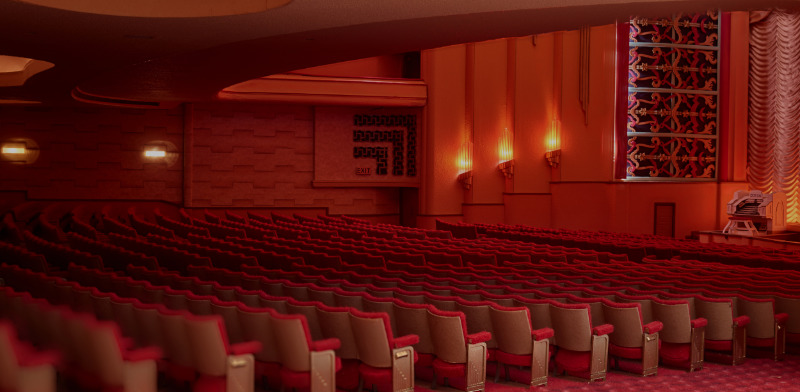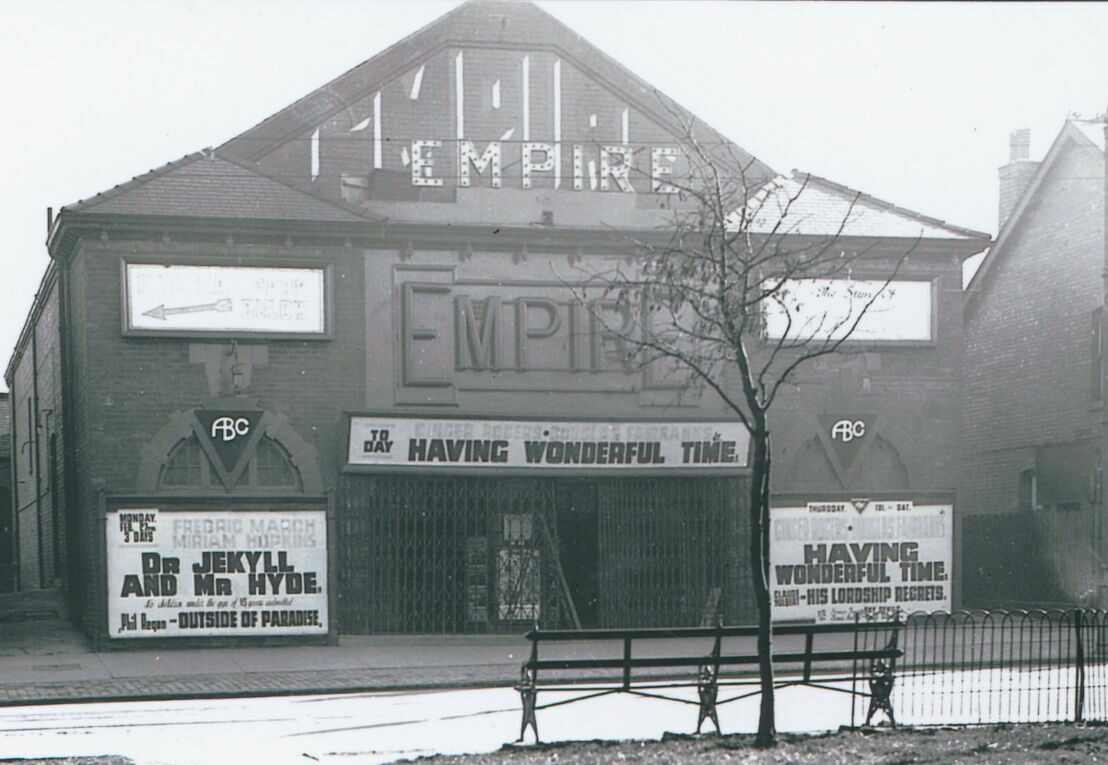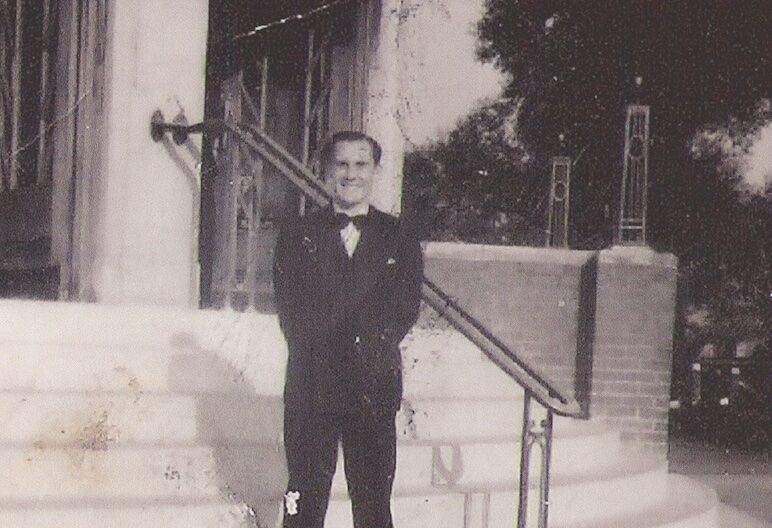Article by Ian Francis with photographs by David Rowan and film above by Luke Unsworth.
Our journey through Birmingham’s cinema stories began with a misty drive into the Rhondda Valley. We were on the trail of a scale model of the Odeon New Street, which had made its way from a spare bedroom in Sutton Coldfield – via Wolverhampton City Council and a barn in Cannock – to a former chapel in Ynyshir which now goes by the name of Paul Kirner’s Music Palace, a shrine to the wonders of the cinema organ. Paul and Ben who ran the place had kindly agreed to let us inspect the model, with a view to maybe displaying it as part of the Wonderland exhibition.
To kick things off Paul emerged from beneath the stage on the Compton and gave us a taste of Smoke Gets In Your Eyes, the chapel walls seeming to shake with the sound. Then we got down to business. The model is not much to look at from the outside: an unwieldy wooden box on trestles, measuring about 3 metres long and a metre and a half across. As soon as you start to peel back its layers, though, you are under its spell. Entrance with undulating canopy. Sweeping staircase with mirrored walls and chandelier. Lush red auditorium with 2,600 tiny tip-up seats and a tiny Compton. (Which also emerges from beneath the stage, thanks to a little string on a pulley.) Behind the scenes is somehow more dazzling: the furnishings in the manager’s office; the detail on the guttering and the stairwells; the toilet rolls in the dressing rooms.
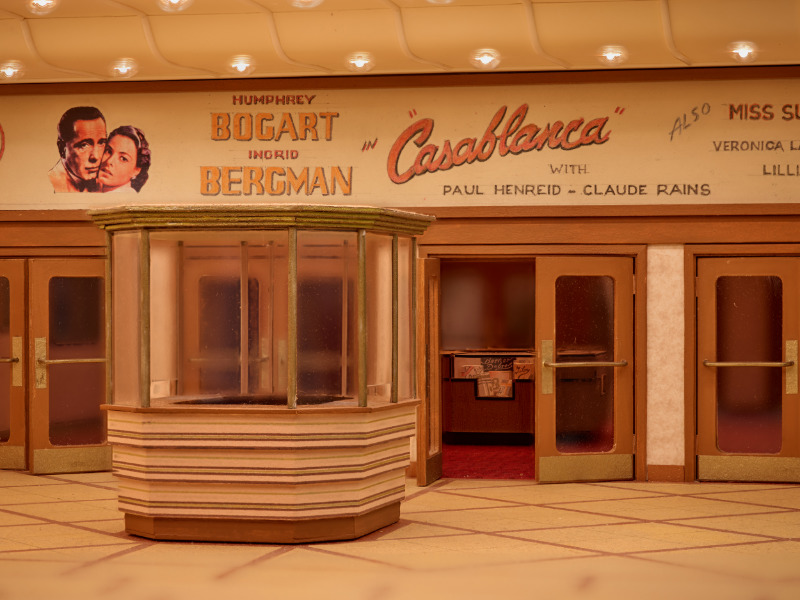
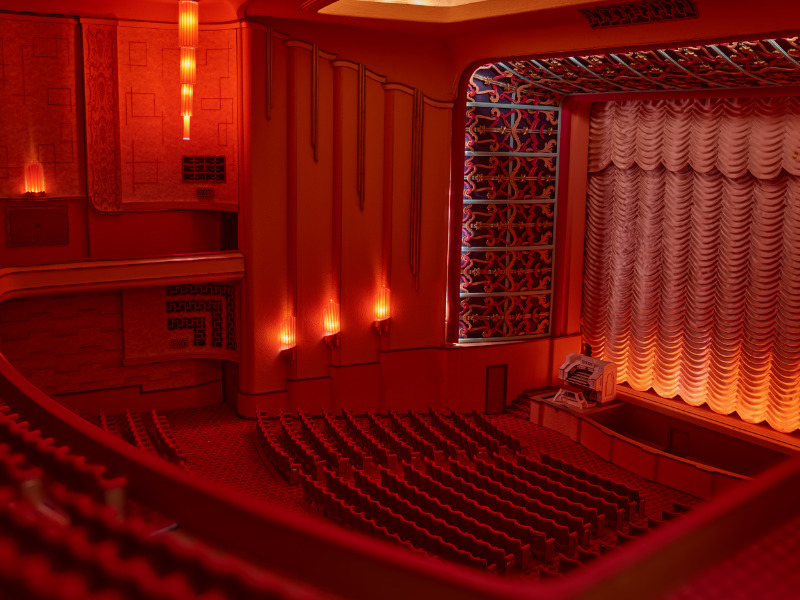

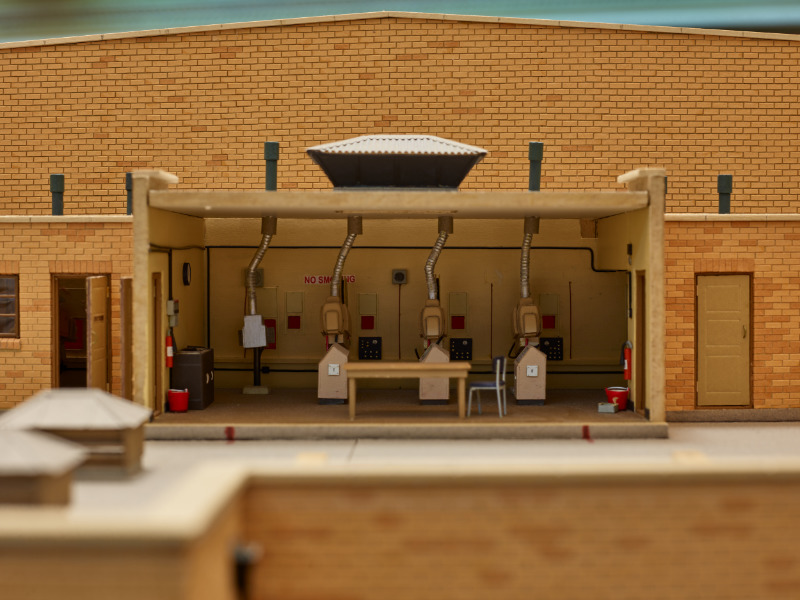

How did this thing come to be? Cyril Barbier was a diamond cutter in the Jewellery Quarter for many years. During the war he went to see Casablanca at the Odeon New Street with Norah, the woman who would become his wife. Later in life he decided to make a scale model of the cinema as he remembered it on that night, and so began a project which would consume twenty eight years and a whole room of their house (to Norah’s slight chagrin).
Delving further, we got slightly dizzy thinking about how we might display this thing to the general public. There’s the fragility of it for a start, and the difficulty of giving people access to a model whose delights are hidden away inside. Then there’s the circuitry. Cyril was a consummate model-maker but he was not a qualified electrician, and the tangled wiring which connects hundreds of glowing incandescent fairy lights would struggle to get past any fire safety inspection.
As our co-curator Felicity put it: “It’s simultaneously the most exciting and the most terrifying object I’ve ever worked with.” Instead of ferrying it to Birmingham we decided to document it inside and out with help from photographer David Rowan and filmmaker Luke Unsworth, and the results have been a centrepiece of the exhibition.
We hope that this isn’t the end of the story. Cyril’s ambition was always for the model to end up in the Birmingham Museum collection, and conversations are now underway to repatriate his masterpiece. As an illustration of the ‘super cinema’ experience and a portrait of an obsession it’s hard to beat.
In memory of Paul Kirner, who passed away in November 2022

